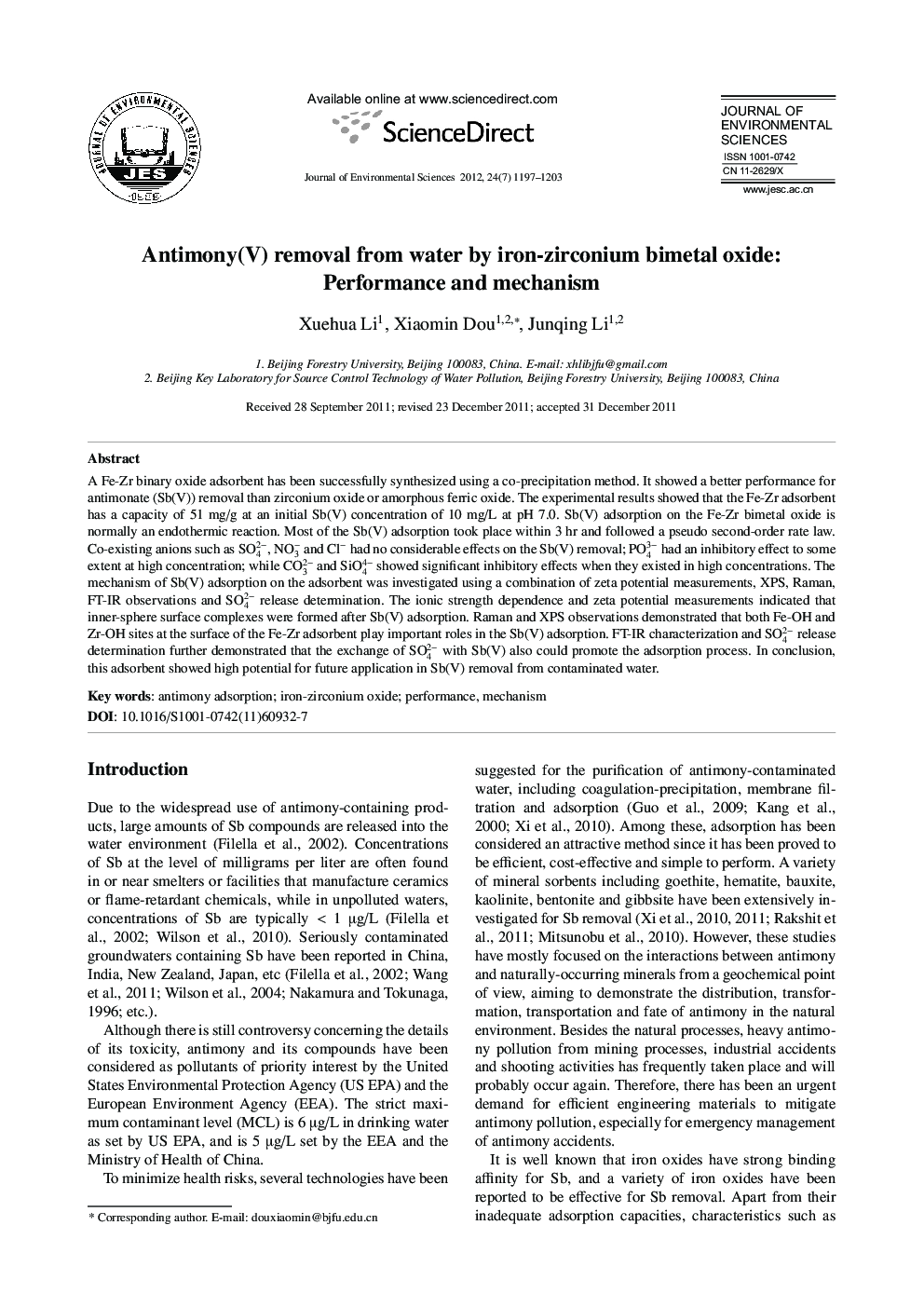| Article ID | Journal | Published Year | Pages | File Type |
|---|---|---|---|---|
| 4455311 | Journal of Environmental Sciences | 2012 | 7 Pages |
A Fe-Zr binary oxide adsorbent has been successfully synthesized using a co-precipitation method. It showed a better performance for antimonate (Sb(V)) removal than zirconium oxide or amorphous ferric oxide. The experimental results showed that the Fe-Zr adsorbent has a capacity of 51 mg/g at an initial Sb(V) concentration of 10 mg/L at pH 7.0. Sb(V) adsorption on the Fe-Zr bimetal oxide is normally an endothermic reaction. Most of the Sb(V) adsorption took place within 3 hr and followed a pseudo second-order rate law. Co-existing anions such as SO42−, NO3− and Cl− had no considerable effects on the Sb(V) removal; PO43− had an inhibitory effect to some extent at high concentration; while CO32− and SiO44− showed significant inhibitory effects when they existed in high concentrations. The mechanism of Sb(V) adsorption on the adsorbent was investigated using a combination of zeta potential measurements, XPS, Raman, FT-IR observations and SO42− release determination. The ionic strength dependence and zeta potential measurements indicated that inner-sphere surface complexes were formed after Sb(V) adsorption. Raman and XPS observations demonstrated that both Fe-OH and Zr-OH sites at the surface of the Fe-Zr adsorbent play important roles in the Sb(V) adsorption. FT-IR characterization and SO42− release determination further demonstrated that the exchange of SO42− with Sb(V) also could promote the adsorption process. In conclusion, this adsorbent showed high potential for future application in Sb(V) removal from contaminated water.
